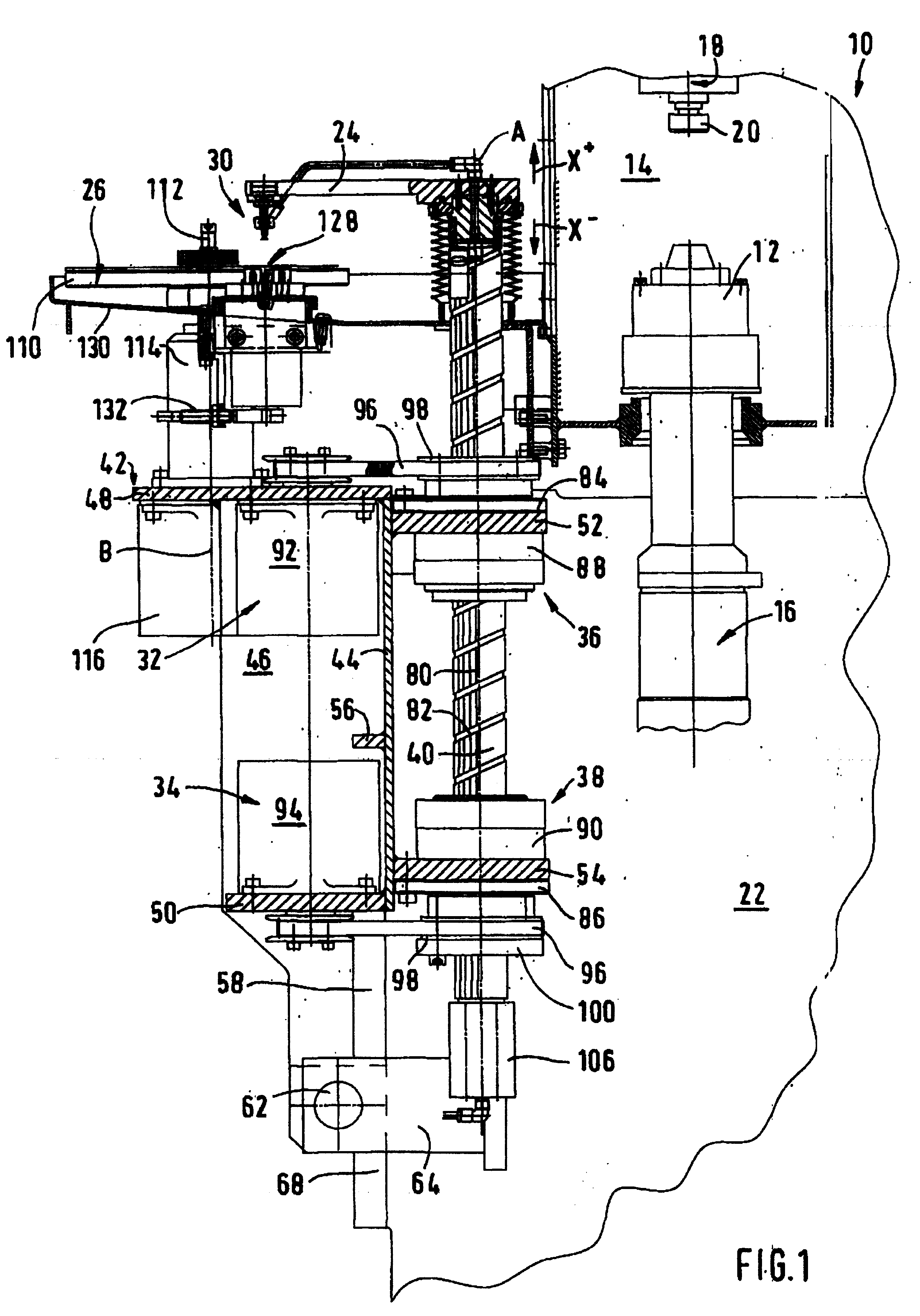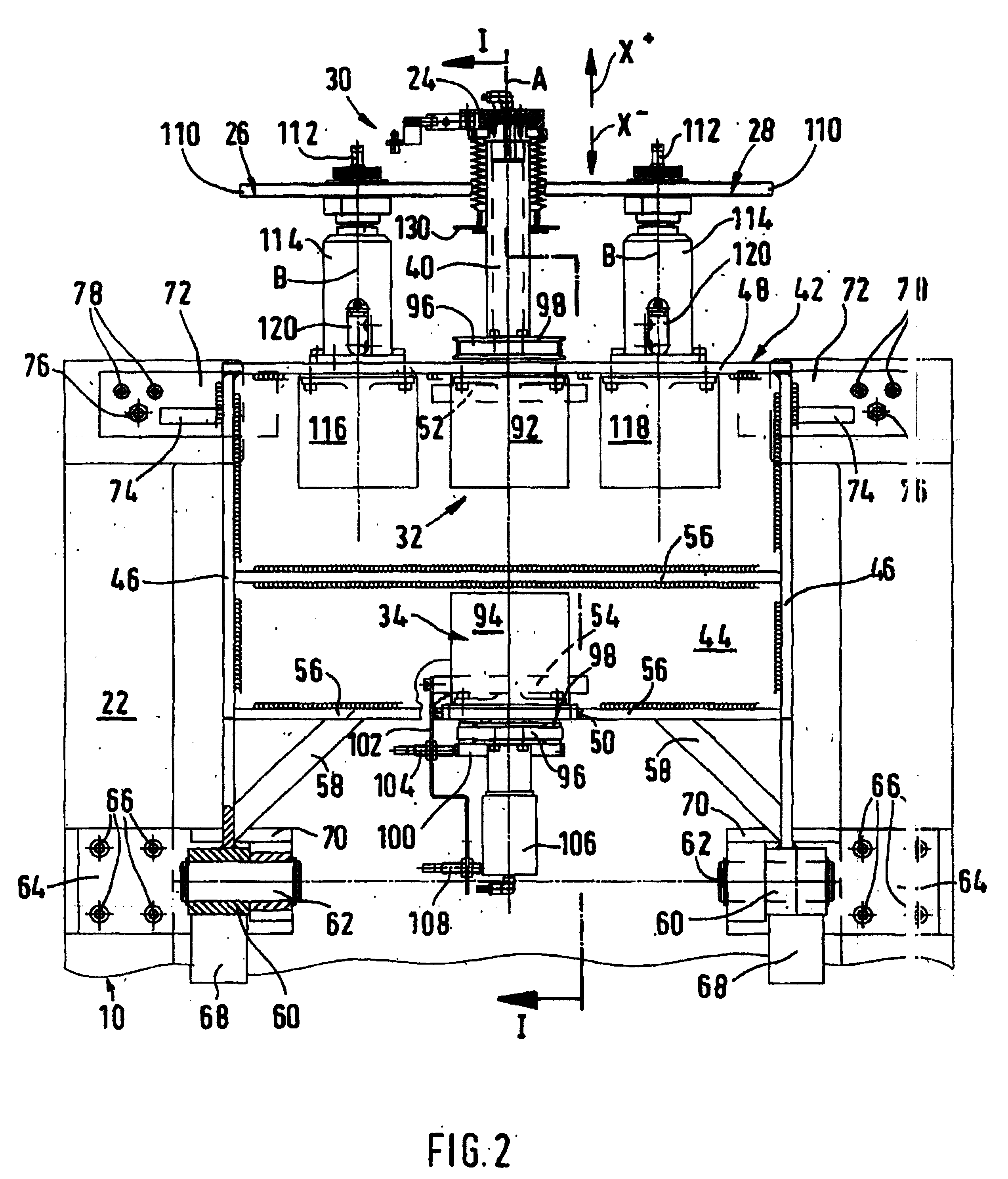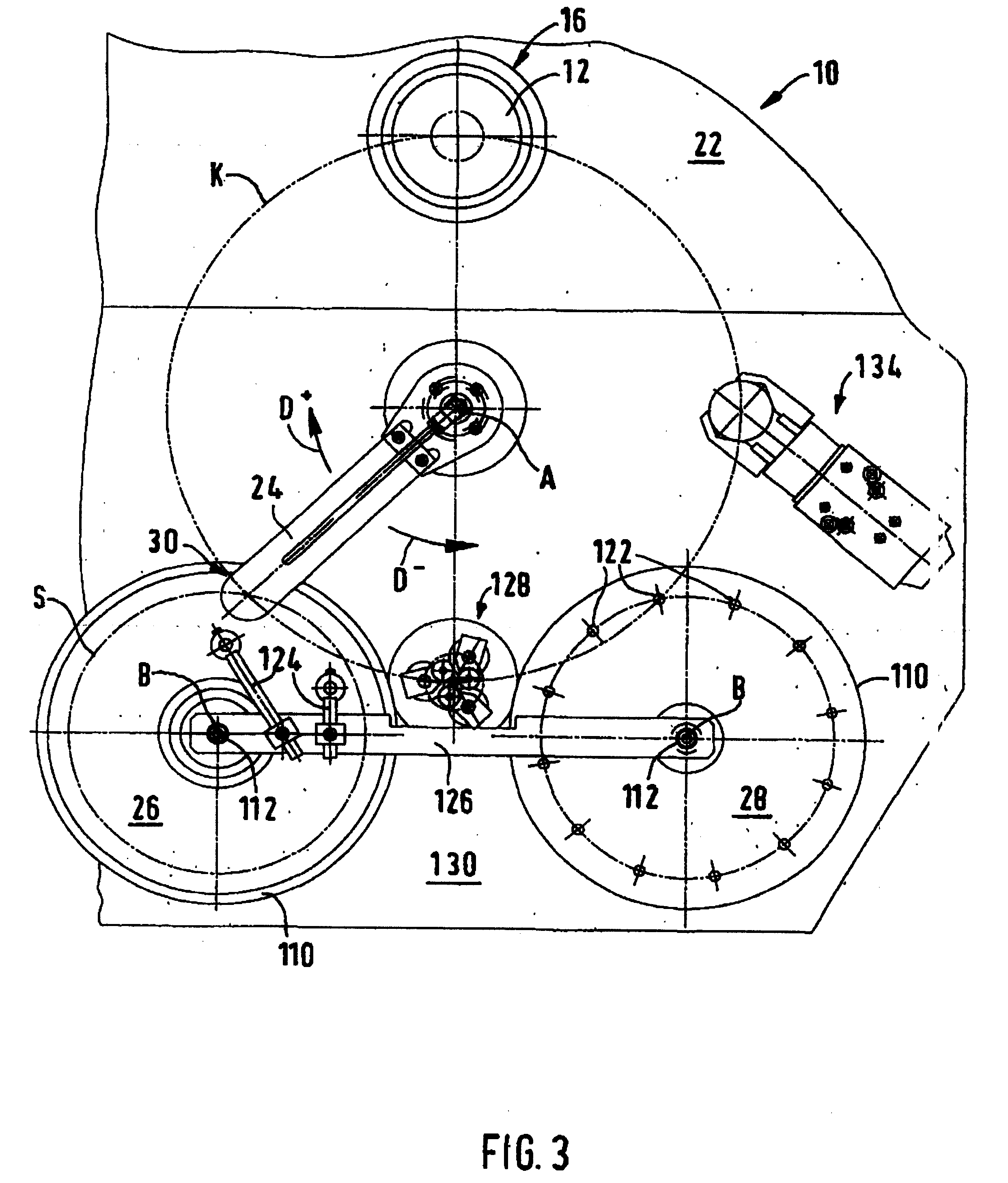[0012] Thus an essential feature of the invention is the use of a special spindle equipped with several overlaying degrees of movement freedom, the movement processes of which can be freely programmed, preferably independently of the control of the
machining processes being performed on the lens machine. This spindle guides and controls in a compact, simple and stable manner all movements of the loading arm i.e. both its
stroke and its rotation movements, without end-of-travel stops being required. In this way the loading arm can approach any intermediate positions at which the device can be fitted with equipment for additional work processes such as precentring, turning or rotating, measuring or washing of the lens. As the loading arm in each direction can be guided over any long or short swivel or
stroke movements, all movement processes can be performed with optimum travel and hence time. A spindle which can be used for the purposes of the invention is available commercially under the name "
Ball Screw Spline" type BNS from the company THK Co. Limited, Tokyo, Japan. Finally in this connection it should also be stated that the device provided on the loading arm for picking up and depositing workpieces can for example be a vacuum-operated suction element adjustable in height to pick up lenses of different thicknesses against
spring force, or a gripper or clamping element driven by
compressed air.
[0013] In an advantageous embodiment of the invention, the spindle with the loading arm, its drive elements and guide elements is attached to a frame which as a self-contained
system carrier can dock on the lens machine in a defined position to the workpiece spindle of the lens machine so that the workpiece spindle of the lens machine lies on a swivel circle of the loading arm device. Thus the device can be used as a loading
system on any lens machine e.g. fine
grinding,
polishing,
centring or lens edge machining apparatus, even by subsequent fitting. The frame of the invention is there preferably docked on the front side of the lens machine concerned and as a self-contained system carrier can carry or contain all
mechanical elements such as also the electronic controls, the operating and display elements (keyboard / screen) and the
pneumatics for the device provided on the loading arm for picking up and depositing workpieces. The frame of the device can in a compact construction also have a cylindrical
metal sleeve which holds the nut elements according to the invention and protects these against soiling.
[0014] In a further development of the inventive concept, the frame can dock on the lens machine at its lower end via swivel pins and at its upper end via screws and stops which can be adjusted to achieve in a simple manner the axial parallelity between the spindle and the workpiece spindle of the lens machine. As a result after release of the screws the device can be swivelled away to the front whereby e.g. the workpiece spindle of the lens machine is easily accessible for maintenance or repair purposes without hindrance from the device. Alternatively or in addition the frame can also be attached swivelling to the side on the lens machine. Here also adjustable stops and screws can be provided which serve to set the rotary
axis distance from the spindle and workpiece spindle.
[0016] In the further development of the invention at the lower end of the totally hollow spindle can be applied a rotary passage through which a vacuum can be applied and / or compressed air supplied to the device of the loading arm. By using the spindle itself as a supply or guide element, the
pneumatic pressure can easily be applied to the loading arm device.
[0017] In an advantageous refinement of the invention, on the frame of the device are preferably fitted two magazines for blanks and finished workpieces, the collection and deposit positions of which are on the swivel circle of the loading arm device. The workpieces to be processed or already processed are stored in these magazines so that they can be guided into the relevant collection position or from the deposit position. Preferably the two magazines are rotatable or where applicable exchangeable plate magazines which are symmetrically arranged at the side and--viewed from the front--in front of the spindle, and the rotary axes of which are aligned parallel to the spindle and allocated to each of which is a freely programmable and indexable drive attached to the frame. Thus advantageously there is a good
adaptation facility to different workpiece sizes and geometries. As an alternative to the
magazine, according to the relevant requirements, a
conveyor belt for
recipe or lens transport cases can be arranged in relation to the swivel circle of the loading arm device such that by means of the loading arm device, blanks and finished workpieces can be collected from or deposited in correspondingly positioned boxes by means of the
conveyor belt.
 Login to View More
Login to View More 


